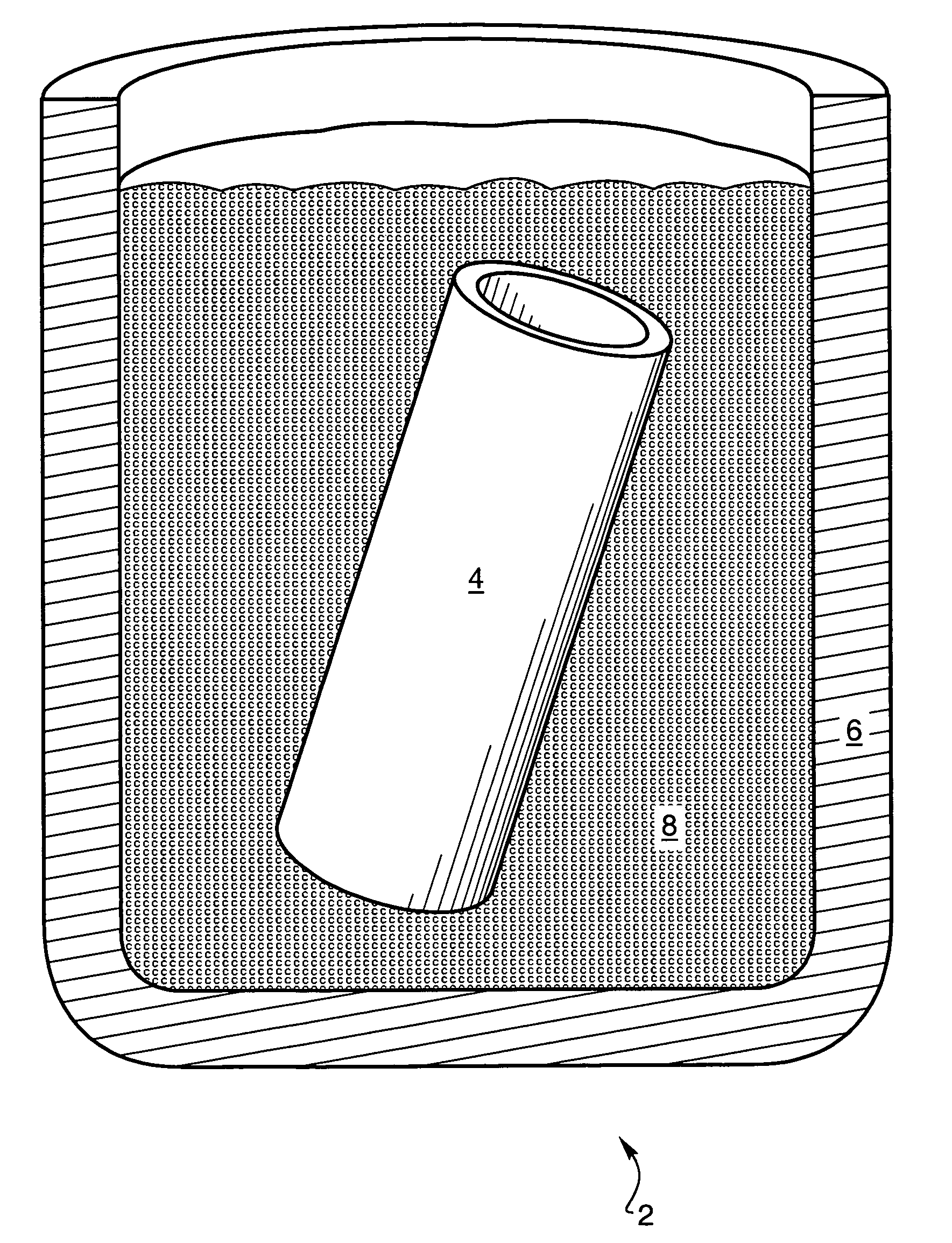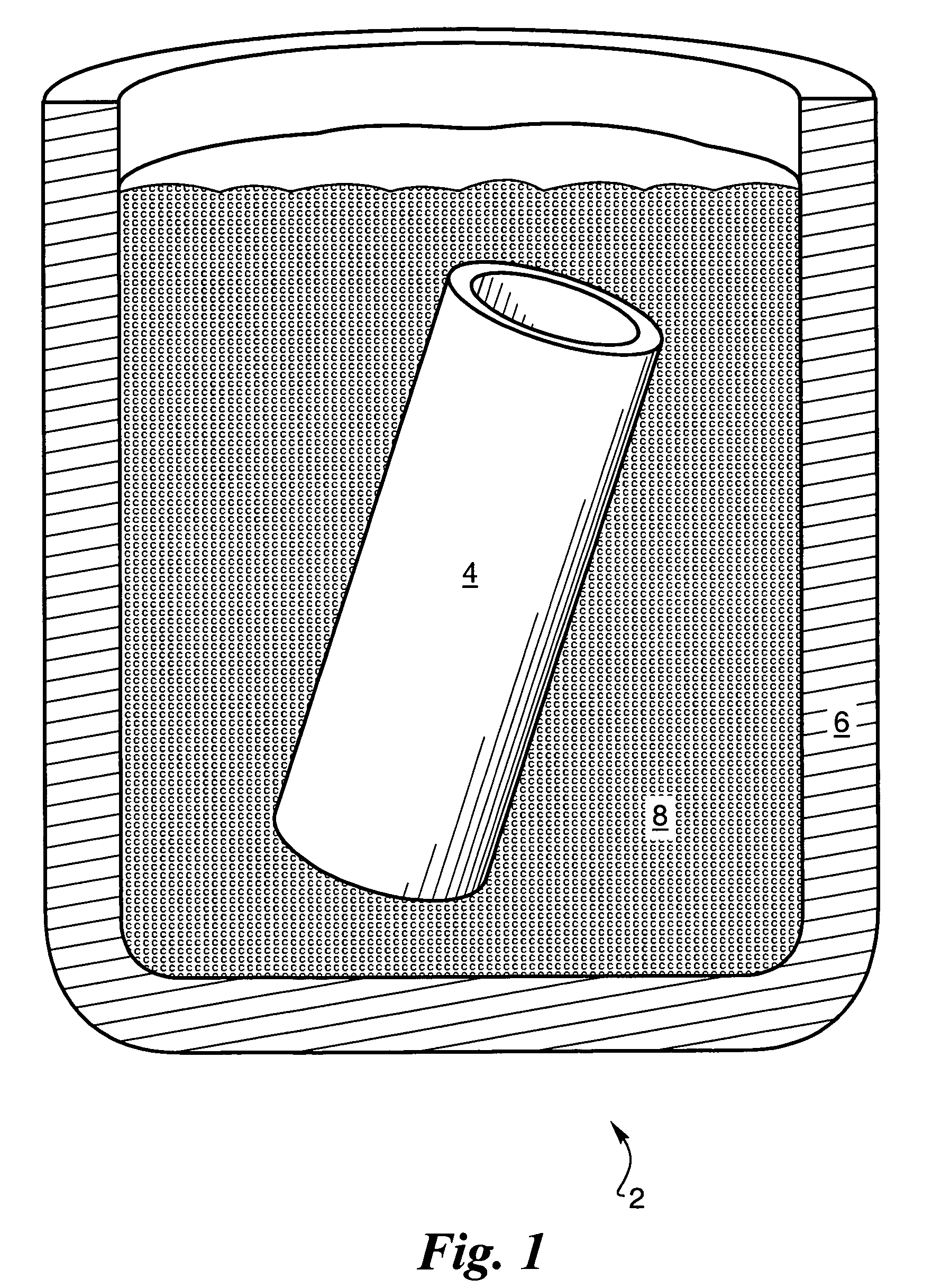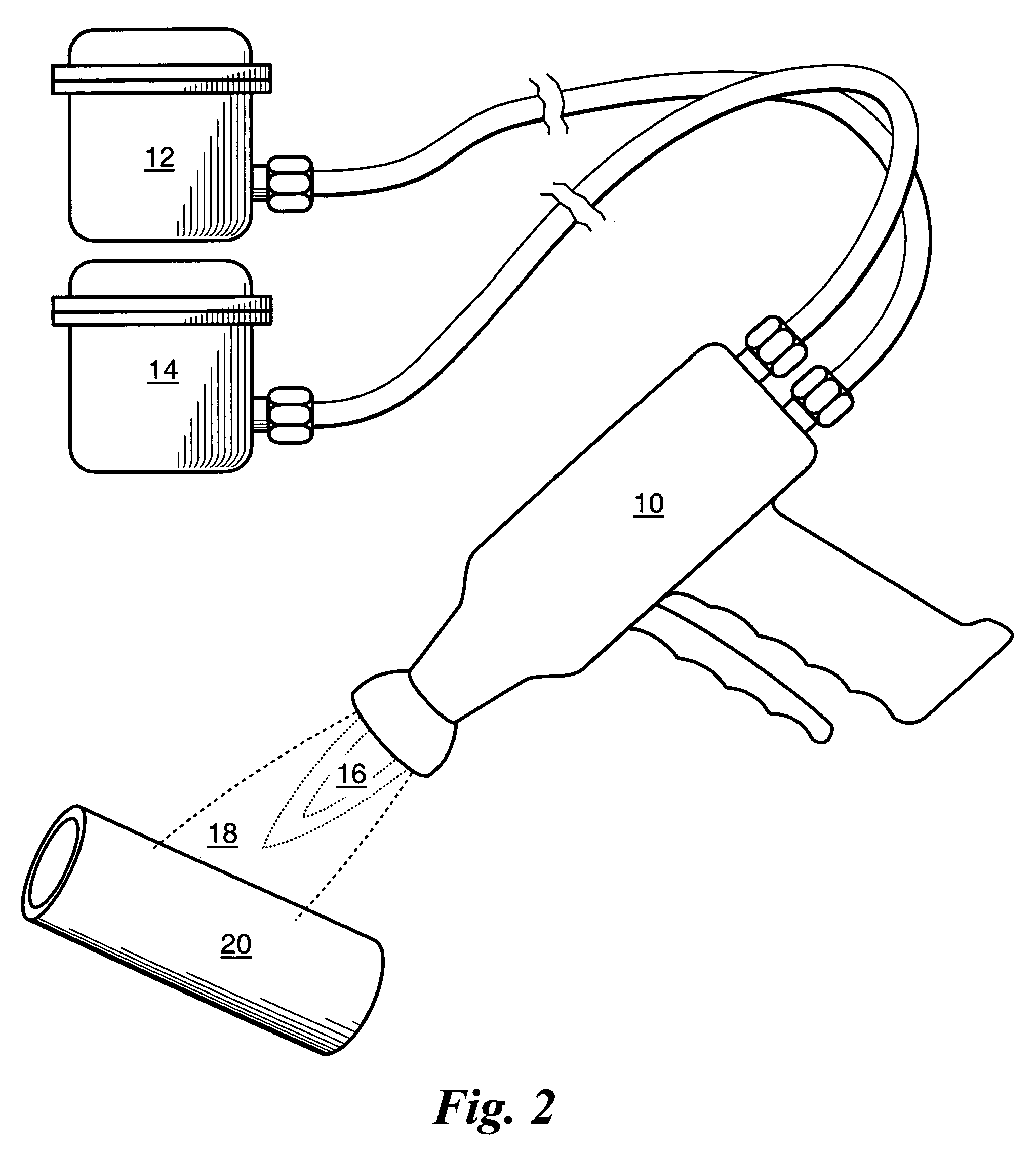Material and method to prevent low temperature degradation of zirconia in biomedical implants
a biomedical implant and low temperature degradation technology, applied in the field of materials and methods to prevent low temperature degradation of zirconia in biomedical implants, can solve the problems of tzp showing a significant strength decrement, unsuitable implant material, and tzp components suffering a decrement in strength properties
- Summary
- Abstract
- Description
- Claims
- Application Information
AI Technical Summary
Problems solved by technology
Method used
Image
Examples
Embodiment Construction
[0014]A broadly applicable material and method of producing the material begins with the densified as-sintered, post-hot pressed, or hot isostatically pressed tetragonal zirconia polycrystalline ceramic (TZP) material that has been made by processes that are known to one skilled in the art, containing about 3 mole percent of yttria, which is subsequently thermally processed to convert the surface to a stable phase of cubic or T-prime zirconia (zirconium oxide) phase. It is well established that the cubic and T-prime phases of zirconia are stable in moist environments and are not subject to the deleterious low-temperature degradation failure mechanism that plagues TZP materials.
[0015]As presented in FIG. 1, a thermal treatment apparatus 2 is utilized to form the low-temperature resistant material. A densified ceramic component 4 comprised of TZP is placed in a containment vessel 6. A cation-rich bed 8 preferably comprised of a powder material surrounds the ceramic component 4.
[0016]T...
PUM
| Property | Measurement | Unit |
|---|---|---|
| temperature | aaaaa | aaaaa |
| pressure | aaaaa | aaaaa |
| depth | aaaaa | aaaaa |
Abstract
Description
Claims
Application Information
 Login to View More
Login to View More - R&D
- Intellectual Property
- Life Sciences
- Materials
- Tech Scout
- Unparalleled Data Quality
- Higher Quality Content
- 60% Fewer Hallucinations
Browse by: Latest US Patents, China's latest patents, Technical Efficacy Thesaurus, Application Domain, Technology Topic, Popular Technical Reports.
© 2025 PatSnap. All rights reserved.Legal|Privacy policy|Modern Slavery Act Transparency Statement|Sitemap|About US| Contact US: help@patsnap.com



